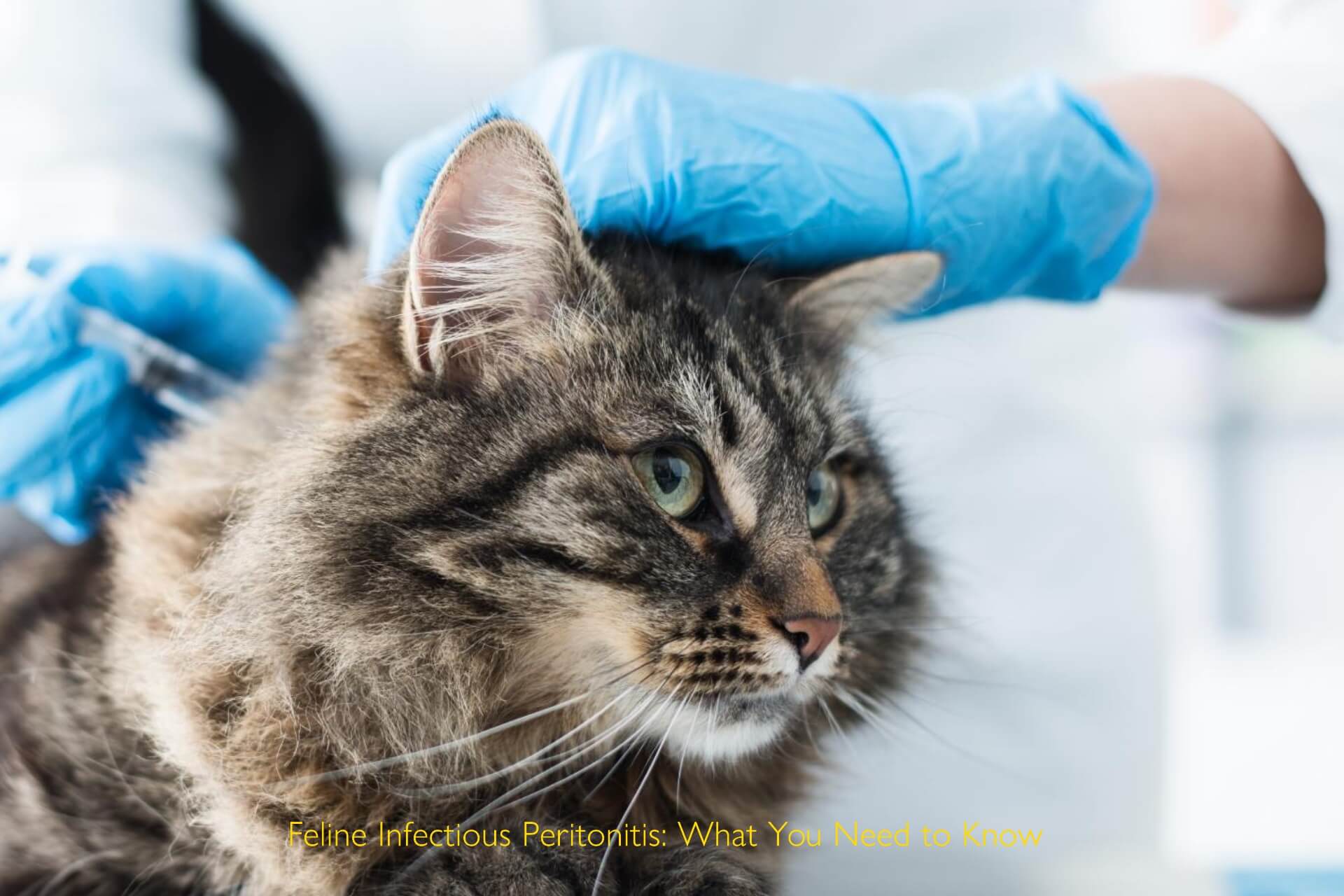Feline Infectious Peritonitis (FIP): Causes, Diagnosis, Treatment, and
Prevention
Feline Infectious Peritonitis
(FIP) is a viral disease caused by the feline coronavirus (FCoV) that primarily
affects cats under 3 years of age, with the highest prevalence observed in cats
between 4 and 16 months old. Although it was identified in 1950, FIP is
currently considered an emerging disease and accounts for approximately 1 in
200 cases diagnosed in referral hospitals. The disease poses significant
challenges due to its high mortality rate, lack of definitive diagnostic
techniques, and limited treatment options, which can have a profound
psychological impact on cat owners who have developed a bond with their feline
companions.
Aetiology and Pathogenesis
FIP is a result of mutations in
the feline enteric coronavirus (FECV), a virus that typically causes mild
gastrointestinal infections in cats. FECV is shed in the feces of apparently
healthy cats, and transmission occurs through direct contact via the fecal-oral
route or through contaminated objects. Kittens are particularly susceptible to
infection, and mutation can occur when levels of FECV replication are high
around nine weeks of age. However, only a small proportion of cats exposed to
the mutated variant of the virus (FIPV) develop FIP, indicating the influence
of various factors, including genetic susceptibility, age at exposure, type of
viral mutation, and stress-related factors during infection.
The disease course and severity
vary depending on the age of the cat and the form of FIP. The exudative form of
FIP is characterized by immune system-mediated vasculitis, leading to fluid
accumulation in the abdomen, chest, or pericardium. In contrast, the
non-exudative form is marked by the formation of pyogranulomatous lesions in various
organs. The clinical signs and disease progression can fluctuate, with some
cats experiencing acute symptoms and a rapid decline, while others may have a
more chronic response.
Diagnostic Tests for FIP
Diagnosing FIP requires a
comprehensive approach, considering various parameters, including the age and
origin of the cat, clinical signs, and physical examination findings. Cats aged
4 to 36 months, living in high-density multi-cat environments, presenting with
remittent fever, and unresponsiveness to antibiotics are highly likely to have
FIP. However, due to the lack of definitive diagnostic techniques, several
indirect tests are utilized to support the diagnosis.
Indirect tests include a complete
blood count to assess for characteristic changes such as chronic
non-regenerative anemia, leukocytosis with increased neutrophils, and decreased
lymphocyte count. Evaluation of serum protein levels, particularly albumin,
globulin, and bilirubin, can provide valuable information. Cats with FIP often
exhibit elevated globulin levels, decreased albumin levels, and a low
albumin/globulin (A/G) ratio. Hyperbilirubinemia and hyperbilirubinuria are
also common in cats with FIP, indicating increased destruction of red blood
cells.
Effusion analysis plays a crucial
role in diagnosing the exudative form of FIP. Analysis of peritoneal or pleural
fluid reveals characteristic features such as high protein concentration,
viscosity, and specific cellularity. Ultrasonography can aid in identifying the
presence of fluid and obtaining samples for further analysis. Other indirect
tests include the evaluation of the albumin/globulin ratio, ocular and
neurological signs, antibody titers in feline coronavirus, Rivalta's test, and
acute phase proteins.
Direct tests, such as immunohistochemistry
and polymerase chain reaction (PCR), aim to identify the specific causative
agent of FIP. Immunohistochemistry involves the detection of viral proteins in
tissue or fluid samples affected by FIP. PCR techniques can detect feline
coronavirus RNA, but differentiating between enteric coronavirus and FIP
coronavirus has been a challenge. However, recent advancements in RT-PCR have
enabled the distinction between the two viruses by evaluating specific
mutations associated with FIP. These direct tests provide more definitive
evidence but are often reserved for cases where clinical signs, physical
examination findings, and indirect tests strongly suggest FIP.
Treatment
Treating FIP remains challenging
due to the lack of a definitive cure. Various treatment approaches have been
explored, aiming to inhibit viral replication, modulate the inflammatory
response, and stimulate the immune system. However, the effectiveness of these
treatments is limited, and some may have undesirable side effects.
Antiviral drugs, such as protease
inhibitors, have shown promise in inhibiting FIP virus replication in
laboratory studies. However, their clinical use is challenging due to difficulties
in achieving effective drug concentrations in affected tissues and potential
toxicity to the host.
Immunomodulatory drugs, including
glucocorticoids and cyclosporine A, have been used to suppress the exaggerated
immune response associated with FIP. These medications aim to reduce
inflammation and slow disease progression. However, their effectiveness in
improving clinical outcomes and prolonging survival is still uncertain.
Immunostimulant drugs, such as
feline interferon ω, have been investigated for their potential to enhance the
immune response against FIP. However, clinical studies have not provided
consistent evidence of their efficacy, and their use remains controversial.
Supportive care plays a crucial
role in managing FIP cases. Providing proper nutrition, maintaining hydration,
and managing symptoms, such as fever and pain, are essential for improving the
cat's quality of life. Palliative care focuses on maximizing comfort and
minimizing distress in cats with advanced stages of the disease.
Experimental treatments,
including the use of antiviral peptides and novel immunomodulators, are being
investigated in research settings. However, their efficacy and safety in
clinical practice are yet to be established.
Prevention
Preventing the spread of FIP is
crucial, particularly in multi-cat environments. Minimizing fecal contamination
through proper litter box management, controlling the number of cats in a
household, and implementing serological screening for antibody status can help
reduce the risk of FIP transmission. Vaccination has been explored as a
preventive measure, but the current FIP vaccine has limitations. The vaccine is
not completely protective, and its effectiveness varies depending on the cat's
age, exposure status, and individual immune response.
Feline Infectious Peritonitis
(FIP) poses significant challenges in diagnosis and treatment. A thorough
evaluation of clinical signs, physical examination findings, and results from
both indirect and direct diagnostic tests is necessary to establish a
reasonable certainty of diagnosis. While there is no definitive cure for FIP,
providing supportive care and maintaining a good quality of life for affected
cats remain essential. Ongoing research and advancements in treatment options
hold promise for improved outcomes in the future. Implementing preventive
measures, such as minimizing viral spread in multi-cat environments, can help
reduce the incidence of FIP and protect vulnerable feline populations.


















